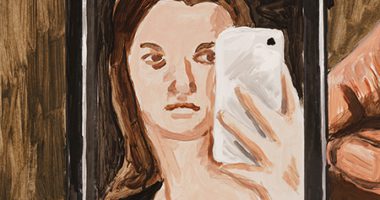The Artsy Asks Series
Experts answer the most important questions for galleries today.
Who
Jennifer Pratt, Artsy’s Director of Art Fair Partnerships, has over a decade of art market experience. Having previously led the marketing and communications teams for Art Basel in Hong Kong, Pratt is passionate about connecting art fairs, biennials, and gallery weekends digitally with audiences around the world.

Artsy’s Director of Art Fair Partnerships, Jennifer Pratt with artist Lucy Ivanova at the Artsy x Liste Apéro Event, Art Basel 2022. Photo by Ronja Burkard.
Fairs are tentpole moments in the art world, where galleries can showcase their artists’ work to a broader audience, gain better insight into the market by seeing other gallery presentations, and, of course, meet new collectors. Many galleries make a large portion of their annual sales at fairs, so the rewards of participating in them are clear.
Yet today, there is more to art fairs than attending them in person. Digital tools have been transformative to the industry, with most fairs also existing online—helping galleries make more sales, and giving collectors the opportunity to experience the fair wherever they are.
Below, Artsy’s Director of Art Fair Partnerships, Jennifer Pratt, answers key questions galleries may have when participating in art fairs today.
I’ve never participated in a fair before. How do I find the right one for my gallery?
Fairs are a great way for galleries to meet new collectors, establish their brand, and expand their network. When deciding which art fairs to invest in, galleries should consider two factors.
First, look at galleries you consider your peers, and see which fairs they participate in. Could you picture your gallery’s works being presented next to those of the other galleries? If you’re uncertain, reach out to your network and ask about their experiences with fairs, and with the collectors that attend them. Every fair has its own focus and position in the market, so understanding the collector audience will help you identify the fair that fits your needs.
Second, consider your goals and be realistic about your resources. Why do you want to exhibit at an art fair? Are you looking to strengthen and expand your local collector base, or are you looking to reach a new international audience? Even when participating in a more regional fair, you can still meet and engage with collectors across the globe by creating a digital counterpart for your IRL booth.
How can I set my gallery up for success at an art fair? What makes a good fair booth?
Use the promotional materials at your disposal to make the most of your fair investment.
For example, it is important to take the works and narrative of your offline fair booth, and share them online. Upload your booth to your website or a marketplace like Artsy, make information about the artists easily accessible, and include prices. On Artsy, works with visible pricing are at least six times more likely to sell than works without visible pricing.
What’s great about an online booth is that you’re not limited to the physical space of the fair. You can upload works by your artists that didn’t fit into the physical booth, and collectors can see a broader scope of what works are available from your gallery.
Pro tip: Upload your booth online as early as possible. This gives collectors the chance to browse the works in advance, and figure out what they most want to see in person. Also, you can promote your booth online by linking to it across social media and email.
What do successful online art fair booths have in common?
Successful online booths provide high-quality images, often showing close-ups of texture or details that best portray the work. Additionally, they describe each work in depth, and include an artist biography or quotes—giving collectors further insight into the artist and artwork. Put yourself in the shoes of the online collector: What would you look for if you were considering purchasing one of the artworks?
What is something all physical fair booths should have?
QR codes—they are essential for gallery booths now, and collectors love them. Place them throughout your booth at the physical fair to drive collectors online, where they can learn more about your artworks, artists, or gallery. You can also track traffic to your site with QR codes, and collectors can inquire on works who may not have had time to speak with you during the fair.

Artsy QR codes at Art on Paper.
What trends are you seeing among art fairs more broadly?
We are seeing the proliferation of regional fairs and city-based gallery weekends, such as FNB Art Joburg or Delhi Art Week. These smaller affairs offer galleries great opportunities to take part in a larger aggregated event to gain additional momentum in their marketing and collector outreach.
It is also standard practice now for art fairs to host a digital version of the fair—on their own website or with a digital platform like Artsy—in addition to the physical, live event. Fairs today know that being online is important, because more audiences can explore the fair booths and discover artists.
Artsy hosts dozens of international art fairs online each year, from major tentpole events like The Armory Show, to smaller, more focused presentations, like Art Week Toyko. One great advantage of an Artsy fair booth for partners is the access to our suite of selling tools at the fair —including seamless transactions, seller protections, and more.



